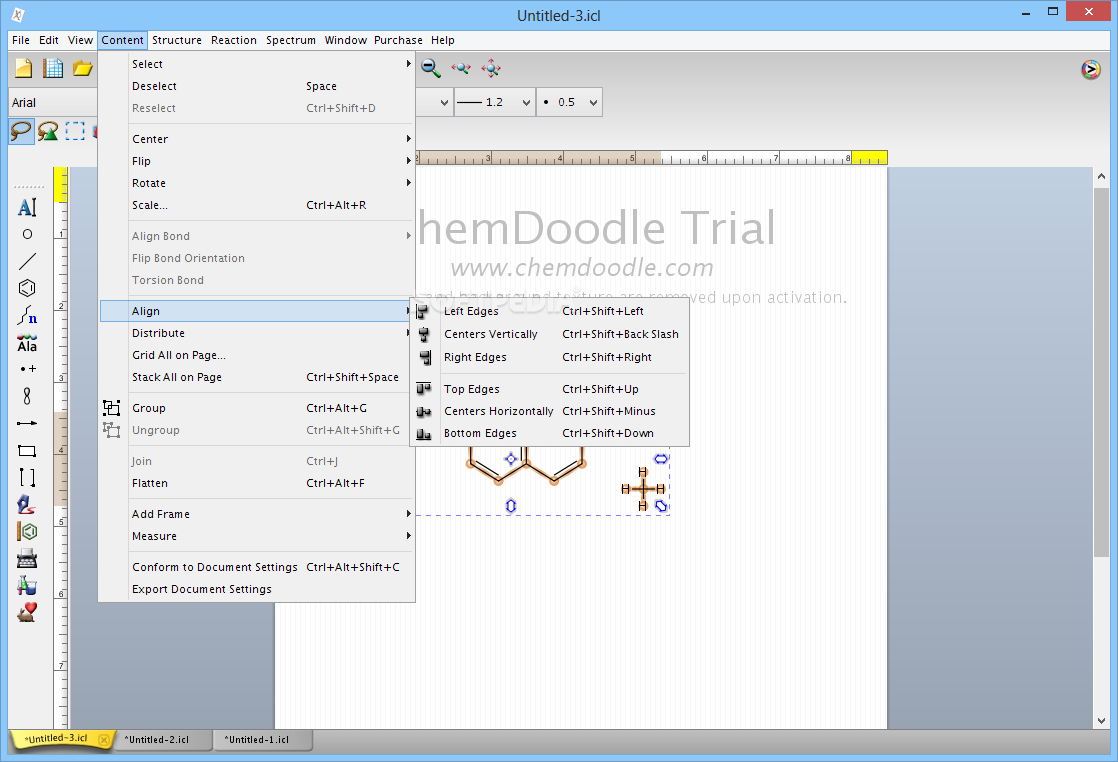

Averaging a yearly version release cycle, CWC has now grown to 20 components including ones for displaying chemical spectra, 3D WebGL graphics, and animations. When first released, CWC comprised of 6 components: the Viewer, Rotator, Transformer, MolGrabber, File Loader, and Doodler (pre-cursor to Sketcher) components. The components of the CWC library are specialized HTML5 classes that expose a high-level API for quick loading and viewing of chemical data, as well as providing utility functions and multi-device event handling. The ChemDoodle Web Components library can be loaded and displayed wherever a HTML5 engine is available, including WYSIWIG text editors, Apple’s Cocoa development kit, and mobile app webviews.īeyond rendering 2D and 3D chemical graphics, the library also provides access to cheminformatics algorithms, chemical file input/output and manipulation, and a toolset for chemistry web application development through a component system that gives the library its name. The deep integration of HTML, CSS and JS in the browser creates a seamless user experience, and
CHEMDOODLE SUPPORT CODE
There are fewer security concerns since the code is sand-boxed in the browser, JS applications are quick to load without the overhead of 3rd party plugins, Installation or updates are not required since JS is enabled in browsers by default, Using web standard technology has a number of advantages over 3rd party plugins like Java applets and Flash: The CWC source code follows JS best practices to ensure maintainability and cross-compatibility with other libraries and frameworks.
CHEMDOODLE SUPPORT LICENSE
CWC is made available under the free and open source, GNU GPLv3 license and is accompanied by detailed documentation and commercial support packages. The ChemDoodle Web Components library, released in 2009, is the first chemistry toolkit for structure viewing and editing that is originally built using only web standard technologies, HTML5, CSS, and JS, and is accordingly supported by all modern desktop and mobile browsers.

The ChemDoodle Web Components technology stack and features Mobile browsers did support HTML5, which opened the door to web applications built with only HTML, CSS and JavaScript (JS), such as the ChemDoodle Web Components. In 2007 however, the hardware landscape changed dramatically with the introduction of mobile devices that did not support third party plugins such as Flash or Java applets. JME, a molecular editor, was later integrated into Jmol to add chemical structure upload and editing functionality. In 2004 Jmol, a Java applet, was released to replace Chime and provide an open source and operating system independent solution to the growing number of web browsers. Based on the molecular visualization program RasMol, Chime was developed as a plugin for Netscape and later for Internet Explorer and Firefox. The first chemical graphics toolkit for the web, MDL Chime, was introduced in 1996.

Companies that implement emerging web technologies can find efficiencies and benefit from competitive advantages. Learning management systems, virtual classrooms and MOOCs are a few examples where chemistry educators need forward compatible tools for digital natives. To get a better understanding on their internal security processes.How we communicate chemical information is increasingly technology driven. Is very aware that security is a key aspect of You want your valuable data to be in good hands. ChemDoodle empowers organisations to work quicker and cleverer with its intelligent features and shortcuts. ChemDoodle also gives organisations the ability to create an countless number of designs with their powerful and easy-to-use design tools. Using ChemDoodle, design teams can work together on projects in real-time, no matter where they are in the world.
CHEMDOODLE SUPPORT SOFTWARE
ChemDoodle's design software helps organisations via permitting organisations to collaborate effortlessly, make unlimited design possibilities, and work faster and more intelligent.


 0 kommentar(er)
0 kommentar(er)
